|
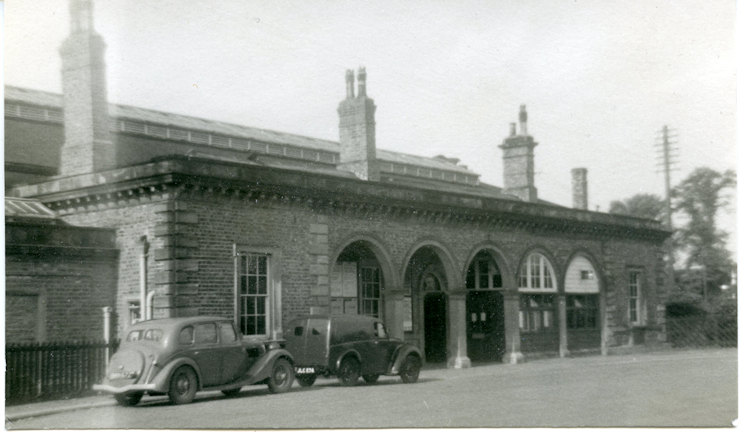
The decision of the Minister of Transport in August, to permit withdrawal of passenger services from the direct York-Hull line, not only means the abandonment of the once-busy crossroads junction of Market Weighton, but also brings the extinction of railways in the Yorkshire Wolds, a remote and little-known, but beautiful part of the East Riding.
MARKET WEIGHTON was served by four lines which were completed separately, although the York & North Midland held powers for a complete route from York to Hull. This was one of several such schemes proposed during the 1845 mania, some of which involved a connection with the Hull & Selby line near Brough, which met with the approval of the Y.N.M.R. board on April 30, 1846, when they agreed to accept the Bill with any necessary Parliamentary alterations and to set their seal to it. It was readily obtained, on June 18, 1846, allowing for a route from the York-Scarborough to the Hull-Bridlington line, via Market Weighton. The
compulsory purchase period was three years, the line to be completed within five.
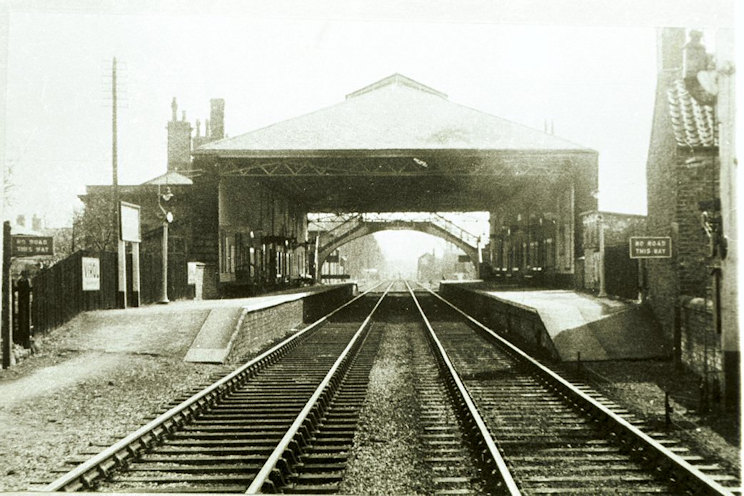
The same terms applied to the Act for the Selby-Market Weighton line, obtained on the same day and known as the Y.N.M.R. (East Riding Branches) No. II Railway Act, 1846. This allowed for "a Railway from the Hull & Selby Railway, in the parish of Barlby, to join an intended Railway from or near the city of York to Beverley, in the Township and Parish of Market Weighton." It also approved a branch from Leconfield, near Beverley, to Hornsea, a route never built.
For the Selby line, the Y.N.M.R. had powers to raise £265,000 capital, with £88,300 borrowing powers, and was authorised to pass through some 37 parishes on the way to Market Weighton. Permission was given for the crossing of 13 public highways, and there were the usual stipulations about fares, "unless in the case of passengers travelling by special trains". The eventual cost of the line was £156,000.
More immediate progress was made from York staking-out beginning on August 12, 1846. Messrs. Jackson and Bean were awarded the contracts for the main works from York (£116,029) in November, and from Selby (£8-1,598) on January 21, 1847, all arrangements being completed by the Secretary on February 10. Burton & Son were responsible for stations on both lines, but there was some delay the following May when the directors suspended station construction on new branches until they had carried out personal inspection.
The half-yearly directors' report expected the York line to be ready to Market Weighton on September 30, 1847—they were optimistic by four days—and the Selby line following two months later—this calculation was very wide of the mark, however. There was trouble with the Rev. J. D. Jefferson, who questioned the siting of Bubwith Station, preferring a site "in the high field by the mill", which the railway did not want. Re was alleged to have sacrificed £166 in the sale of land to the company, and had written "an intemperate letter" of complaint. Mr. Musgrave, of Foggathorpe, wanted sidings provided there and at Seaton for goods traffic, and the District Engineer, Mr. Birkinshaw, was asked to report on this.
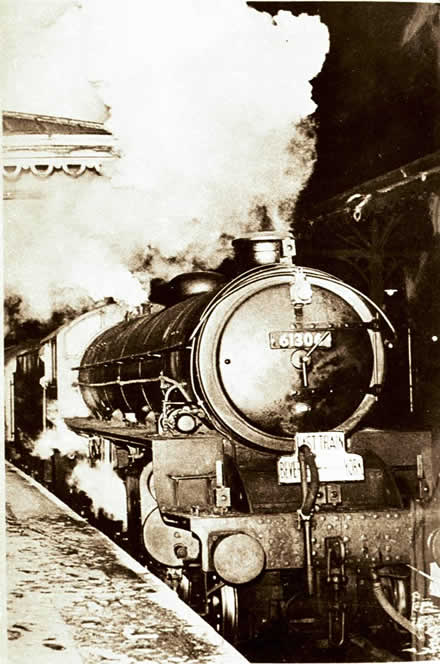
The Last Train through Pocklington Station
Things were still not complete at the new year, and on March 30, 1848, it was resolved "that the
coal depots on the Selby-Market Weighton line be constructed of wood under Mr. Birkinshaw's direction, as adopted by him at Morpeth." Even on April 13 matters were not decided, as only then was an order given to make the goods depots lower than on the York line. Eventual opening was on August 1, 1848.
Initially, three trains ran each way from York, and two from Selby. The stations on the York line eventually suffered heavily from the North Eastern Railway policy of renaming, which avoided any possibilities of confusion but resulted in many stations conveniently situated for a particular village receiving the name of one much further off. Huntington became Earswick, Stockton turned into Warthill, Burnby to Nunburnholme, and Shipton to Londesborough. Other stations were Stamford Bridge and Pocklington. Gate Helmsley was an addition promised by the directors for May, 1848; only a short distance west of Stamford Bridge, it was later named Holtby and was not very convenient for any of those places!
The original stations on the Selby line were Bubwith (occasionally referred to by early timetables as Dubwith) and Holme. A Mr. Rowntree submitted a scheme for altering the timings to allow one engine to work both lines, but although the directors agreed, nothing could have been done, as the 1850 timetables show. They put on an additional Tuesday market train, leaving Market Weighton at 6.30 and running via Selby (with connection for Leeds) to Hull; this later started from Pocklington, after a petition for better market travel facilities which resulted in a general market ticket scheme from April, 1851.
The investigation, under the chairmanship of John Swann, into the alleged corruption of the Y.N.M.R. under George Hudson gives some details of the operation and finances of the line, besides showing that Hudson made large profits from the sale of land on his estates at Londesborough, Shipton, Market Weighton and Huntington for the railway construction. The directors arranged in March, 1849, for one of their agents to meet an agent nominated by Hudson to settle the compensation, but Hudson was overpaid, as the directors' minutes show, and in November, 1849, it was necessary to seek repayment, only obtained with great difficulty in the Bankruptcy Court.
On the Selby line, the October, 1849, report states eleven permanent-way men were employed, and three from the coaching department costing a total of £137 16s. annually. In the six months to the end of June, 16,766 miles had been run, and takings totalled £2,336, consisting of £1,335 from goods, £924 from passengers, £44 from parcels, £30
from rents and £3 from the conveyances of horses, carriages and dogs. Goods traffic was quite profitable, and in November, 1849, the directors ordered Mr. Bailey to appoint a porter at Holme for the potato season for a maximum of 13s. per week. In a similar vein, Mr. Foster, the Market Weighton stationmaster, asked for assistance in January, 1851, because of the large traffic increase, and was to be provided with a goods clerk for a maximum of 15s. per week.
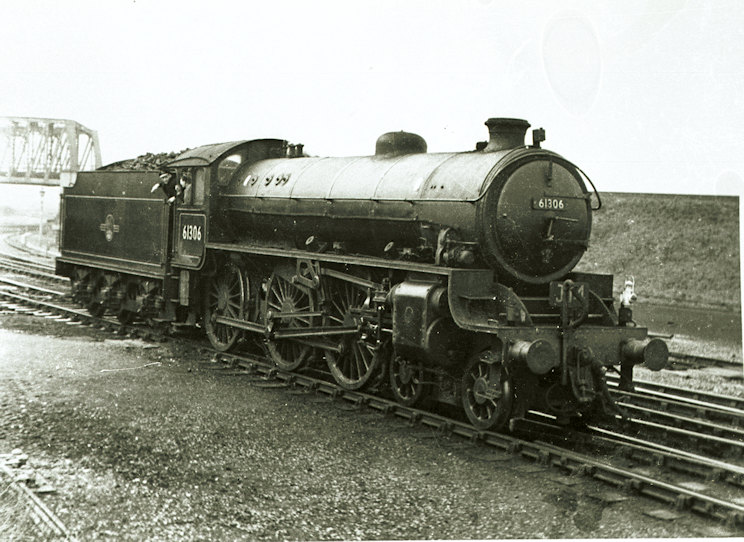
On the other hand, there is evidence of some early proposed "Beechingisation". In August, 1850, the directors heard that receipts from Huntington Station barely exceeded the station master's wages, and it was resolved to close it and give a platelayer occupation of the house. Later they had compassion on the station master, Mr. Naylor, who was to be allowed to remain rent-free provided he attended to the gates there; in the outcome nothing happened.
Under the new Y.N.M.R. management, the purchase of the Market Weighton Canal was completed, on January 4, 1850, notice being filed in the London Gazette on January 19. The cost to the Company was £14,404 15s.10d. The York line had necessitated the purchase of the Pocklington Canal as well, which connected with the River Derwent and was reported to be barely paying its working expenses; this was bought for some £18,000. Also involved was a short branch from the Market Weighton Canal at Holme, known as Sir Edward Vavasour's Canal (£846 15s.). The railway regretted, but could not avoid, its canal obligations. It had still to pay dues to landowners: £100 went in January, 1850, to Earl Fitzwilliam as his share of the Pocklington Canal dues assessed according to former years.
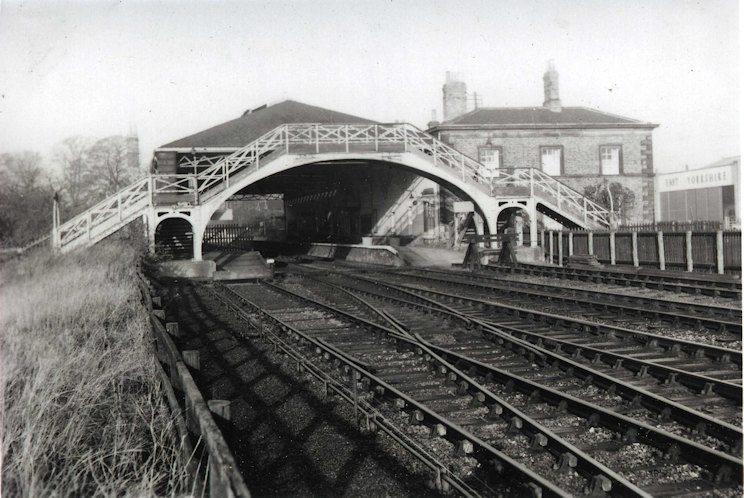
Economies were attempted and in May, 1850, Mr. Swann, the collector of dues at Pocklington, was told that his services were no longer required, and that he was to give up his spare land by the canal. Revenue was sought in any way which did not actually affect rail traffic, and sole fishing rights on the Pocklington Canal were sold to a Mr. Christie. Heavy repairs to locks and cloughs in 1851 brought a suggestion from landowners that the canal be converted to a drain, for irrigation purposes only, provided a tramway was laid along the towpath to meet the agricultural needs of the district. The plan was favourably received, but nothing was done, and in 1862 one finds the N.E.R. burdened with the duty of "cleansing" the canal. It gradually degenerated and parts are now dry.
No attempt had yet been made to proceed from Market Weighton to Beverley. In 1848 the Directors stated that "the stipulation at present existing with Lord Hotham (who lived at Dalton, near Kiplingcotes) as to the manner in which certain works shall be constructed through his property acts as a complete obstacle to the making of this extension with any reasonable prospect of remuneration to the shareholders." The 1849 Committee stressed that the whole scheme was inadequate without the extension, but despite a deputation from Beverley in August, 1850, nothing was done—by the company at least. However, in May, 1851, a Mr. D. Bunton announced that he was going to apply for a Mandamus to compel construction of the line.
_744px.jpg)
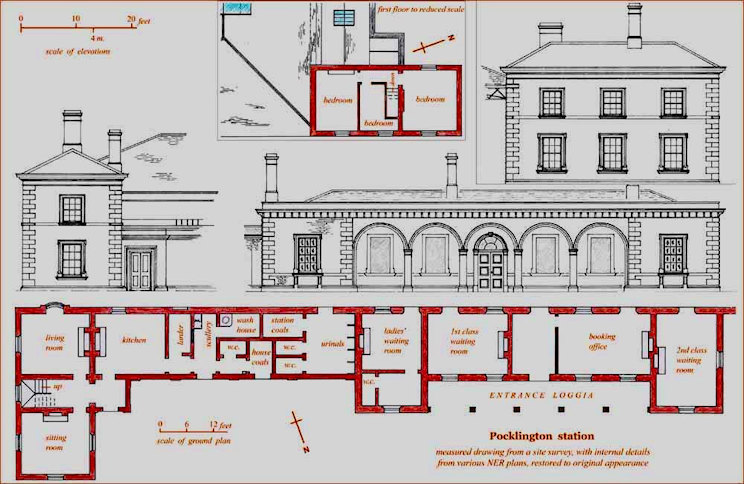
In June the Y.N.M.R. was given only three days to enter a plea, though this was later extended into the next legal term. It was suggested that the company should plead that the line was of no public use; the directors recommended against this. After the Chairman had been to London for conference, the solicitors were instructed to proceed on the issue of insufficiency of capital, but advice from counsel had this struck out. In the event, the lapse of time was such (the period for compulsory purchase having passed) that the Y.N.M.R. was freed from its obligations.
The newly-constituted N.E.R. of 1854 found itself pressed with appeals for the Beverley line. A group in Hull sought a revival of the old scheme for a Brough-Market Weighton line, proposed in 1856, but not approved by the N.E.R., despite an appeal by the Mayor of Hull, Alderman Bannister. In any case, certain persons on the proposed route were none too keen either. The Rev. E. W. Stillingfleet, of South Cave, wanted nothing to do with railways: "You must excuse my confessing that, as Vicar of South Cave, I am unable to be favourable to it on moral consideration. Had we a railway, I have little doubt that bad would be made much worse. The scum of Hull would make it a place for their Sunday revels."
Only in 1860 was the N.E.R. converted to the idea of proceeding with the original route. In June, 1862, a Parliamentary Committee reported that only one landowner had failed to accept reasonable prices for land and they resolved to proceed with the Bill and inform a Beverley deputation in London to this effect. The Act was obtained on June 30, 1862, and work began in September. There must have been numerous delays, however, as, in February, 1864, the directors were still trying to decide whether to provide a station at Goodmanham, just east of Market Weighton, a village famous as the place of conversion of King Edwin of Northumbria to Christianity. They decided that no agreement should be made with Lord Hotham about its permanence as a passenger station, whatever happened, but Goodmanham remained stationless. Intermediate stations were at Kiplingcotes (to serve about two farms!) and Cherry Burton.
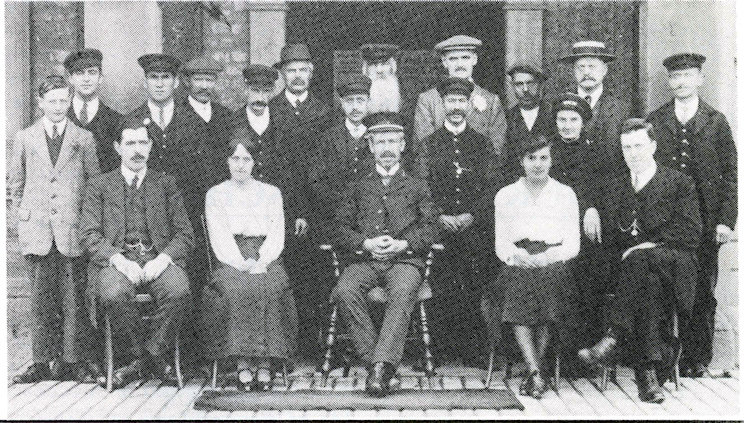
On the Selby route, in the last days of the Y.N.M.R., stations were built at Cliff Common Gate, Duffield Gate, Menthorpe Gate, Foggathorpe Gate and Harswell Gate. The suffix "Gate" was later removed from all except Menthorpe Gate; Duffield Gate did not survive, however, and Harswell Gate became Everingham (as usual, a considerable way off). High Field Station, beyond Bubwith, was built by the N.E.R. In contrast to this expansion, economies in the track were proposed. The engineer was ordered to remove rails placed by the track for the intended doubling of the Selby line (finally achieved by the N.E.R.), while on the York route it was suggested in March, 1851, that one line of rails be taken up when renewal was necessary.
The Beverley extension was opened on May 1, 1865, and a completely revised train service saw four stopping trains from York to Hull, taking two hours, at 7.10, 9.25, 15.30 (the only one with third-class—and that only on market days) and 19.00 hr. Corresponding services from Hull were at 6.45, 9.40 and 16.45, with an express at 13.15, taking 90 min. and calling only at the principal stations, also Gate Helmsley (and later Cherry Burton as well) for first-class passengers. On alternate Thursdays there was a 5.10 market train from Hull, while as from June the 12.05 goods from Market Weighton to Beverley and 13.35 return conveyed a passenger carriage.
The Driffield line was not opened until May 1, 1890. It resulted from a scheme of 1884 to build a direct route from Scarborough to Howden. Little support was forthcoming, the N.E.R. objected,
and only dropped its opposition when Market Weighton was chosen as the objective rather than Howden. The company concerned was constituted as the Scarborough, Bridlington & West Riding Junction Railway, and in March, 1885, the N.E.R agreed to work it between Market Weighton, Driffield and Seamer, but would not be represented on the board. Construction was supposed to begin in June, 1886, but in May, 1887, the company was still asking the N.E.R. for details of materials it might use. This was not all; the projected route in fact did not serve Bridlington at all, by-passing it to the west between Nafferton and Burton, south of Seamer. There could have been little profit from this section, powers being abandoned in November, 1887. This reduced the company with its imposing title to a Driffield-Market Weighton line, and matters had still not been settled in April, 1888, when it was decided to replace a bridge at Bainton by a level crossing and build a station there.
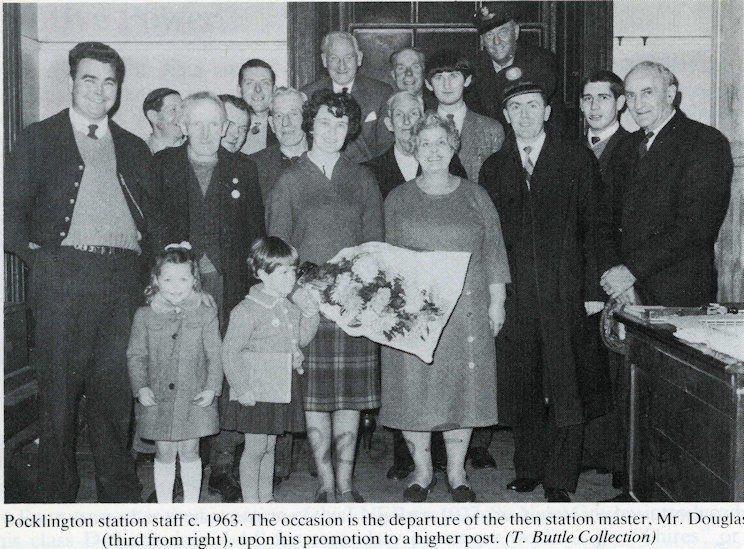
The N.E.R. had started a scheme for doubling between Selby, Market Weighton and Beverley in 1889, and an elaborate service operated from the beginning. There were 12 down and ten up trains, some not operating over the entire line to Selby, some being expresses over one of the sections. All trains north of Market Weighton, except for one local each way, ran through to Bridlington, and there were several conditional stops, one at Everingham being to take on passengers for London. The isolated station at Enthorpe at first had trains only on Wednesdays, Thursdays and Saturdays. The 1892 miners' strike resulted in ten suspensions, but by 1899 the service was even better, two Selby-Bridlington expresses operating between 10.00 and 11.00 with only 20 min. between them! Enthorpe was also given a regular service of five trains each way, and generally this line was far more lavishly served than the Beverley-York.
The later history of the lines serving Market Weighton is one of the inevitable decline, particularly in goods traffic, though passengers have always been carried in plenty on the York route. Some of the small stations were hopelessly isolated. Menthorpe Gate, over a mile from the hamlet of Menthorpe (population in 1917-^M!), mustered a mere £17 in 1940 from passenger journeys. Enthorpe, Foggathorpe and High Field all took between £29 and £43, Everingham, Bubwith and Holme between £104 and £162, and on the Selby line only two stations were taking more than £1 per day, Southburn (annual total £477) and Middleton-on-the-Wolds (£1,615). Express services had long since ceased, and cuts were inevitable. They came first, however, on the York line. Holtby closed to passengers on September 11, 1939, and to freight on January 1, 1951, followed exactly three months later by the complete closure of Nunburnholme. Menthorpe Gate closed to passengers on December 7, 1953, and all other intermediate stations on the Selby line on September 20, 1954. Cherry Burton, Fangfoss and Warthill shut their doors to passengers on January 5, 1959, and Enthorpe's goods facilities ceased on September 14. On January 27, 1964, all other intermediate stations on the Selby line lost goods facilities, except Holme Moor and Everingham.
Between Driffield and Selby, only one up and two down (one on Saturdays) trains survived. The T.U.C.C., reporting on the closure proposed for June 15, 1964, said that they could see no way of alleviating hardship for the very small number who would be affected. The end came on June 14, 1965, and, with the closure of Holme Moor and Everingham goods depots on August 2, the whole route was completely defunct, summer excursions which formerly used the line being diverted via Hull.
On the York line, the position was rather different. The introduction of diesel multiple-units saw a general speeding up of the service which proved popular. There was an abortive attempt to close Kiplingcotes in 1958, after which goods facilities ceased and the station was unstaffed. There was then a rumour that the whole line was to be singled and remote-controlled from a C.T.C. installation at Bootham Junction, York. This would have had a radical effect on the line's finances but, like other schemes of this nature, nothing materialised. A general pruning of goods stations in 1964 saw the closure of all except Market Weighton and Pocklington, which, on the occasion of the author's last visit, held precisely one wagon containing what looked like clods of earth!
Both Selby and York lines share tracks with other routes for some distance from their starting points, to Barlby North Junction and Bootham Junction respectively. The layout at Barlby is such that Hull and Driffield trains use the up East Coast main line for a short distance before veering off east. Between York and Bootham is Burton Lane Signalbox, which controls the junction with the Foss Islands branch, itself providing connection with the Derwent Valley Light Railway, running south to the Selby line at Cliff Common, though disused south of Wheldrake from January, 1965, when this independent company decided to concentrate its resources. As far as Market Weighton both lines pass through the Plain of York, with the wolds beyond Pocklington and Market Weighton always in sight. The scenery may not seem thrilling, but on a bright sunny day it cannot possibly be called boring. There are few engineering works; the Selby line has to cross the Derwent River south of Bubwith, and there is a sizeable viaduct over the Derwent at Stamford Bridge, parallel to a medieval road bridge still in use. There are copious level crossings, however, which must have been the main cause for the deficits. No less than 24 of various sorts exist between Bootham and Beverley North, and there are a further 21 on the Selby-Driffield line.
These level crossings were the source of much complaint of potential, and real disaster in early days. In 1851, a Mr. John Nicholson trespassed on the Selby line after dark with an ass and cart, had unwisely decided to have a short sleep on the track, and was run over. The coroners had several criticisms about the working of gates and the company instructed its employees to keep the gates normally shut across the road, especially at night. There were several cases of horses being killed at Market Weighton through inadequate protection.
Beyond Market Weighton, both lines take to the hills; that to Beverley follows the natural line of the dale, though with some stiff gradients which severely taxed steam locomotives. The Driffield route snakes past Goodmanham village, without its station, but is forced into a series of chalk
cuttings before Enthorpe Station. At the present time, Enthorpe serves, or would serve, one large house which gives the station its name, two derelict railway cottages, and an abandoned racecourse. Things cannot have been much better when the station was open!
Recent building has surrounded Middleton Station with houses, but Bainton Station is high up on the wold, the village being in the dale a mile or so away.
The stations on the two lines are of considerable interest. One of the criticisms of the 1849 Committee was that the Y.N.M.R. had provided grossly luxurious stations on its lines. Certainly it could have spared no expense on the magnificent exterior of Market Weighton Station, which once boasted an overall roof such as still survive at Pocklington and Beverley. There was also, until recently, a refreshment room and an engine shed, no longer used by locomotives and separated from the station by a warehouse which Mr. Musgrave, of Fogga-thorpe, was authorised to erect in 1850. Many goods facilities, indeed, came from public petitions, as for sidings at High Field, Huntington and Cliff Common, and a cattle staith at Pocklington, provided in 1848.
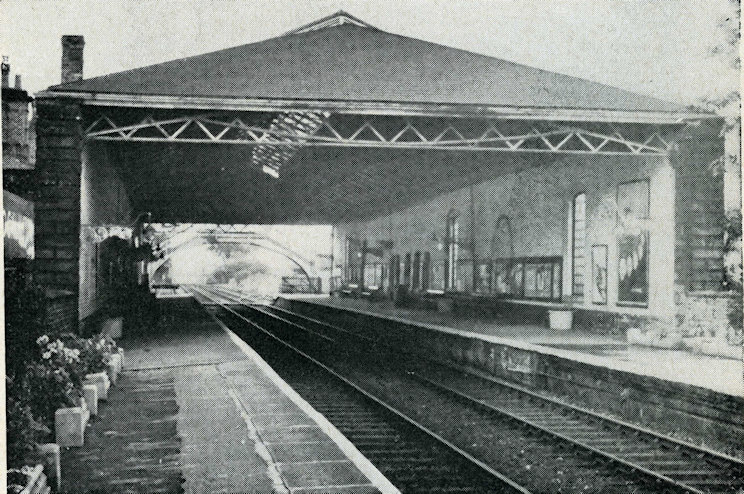 . .
Some of the small stations are slightly niggardly, though Holtby, now without platforms, like Menthorpe Gate, is a fine exception. Stamford Bridge was also well provided for. Nunburnholme, now also platformless, was, however, a squat and rather ugly building—similar to Enthorpe, which seemed to hide in shame in its cutting in the wolds. There are several cases of staggered platforms, as at High Field, Foggathorpe, Everingham and Fangfoss. Bubwith, one of the original Selby line stations, has a small low platform in front of the station buildings. This was not for boarding trains, however, which stopped at conventional platforms with standard wooden shelters on the opposite side of the level crossing; a similar arrangement exists at Hemingborough, on the Hull-Selby line.
The provision of a shelter at Burnby, incidentally, caused much controversy. The absence of one was commented on by the directors in December, 1847, but nothing was done to prevent York passengers having to wait in the rain until, in December, 1850, it was decided to dismantle one half of the waiting shed at the adjacent Shipton and send that down! There also seem to have been some suspicious activities on York line stations in 1849, as an inquiry into the running of Pocklington was ordered at the end of November and only a week later the stationmaster, Mr. J. Lee, tendered his resignation, the post being offered to a certain John Wright for a salary of a guinea a week, on security of £50. However, a complete inquiry into the whole line in 1850 caused the directors to give Wright a month's notice, although they offered him the equivalent post at Holme, whose stationmaster, Dooks, was to be promoted to the job which Wright's undisclosed sins had lost him.
Passenger services on the York-Hull route via Beverley ceased as from November 29 and the Minister's consent has caused widespread bitterness. The trains were well patronised, with generally about 50 persons aboard, and critics of the closure claim that if the C.T.C. scheme had been revived it would have paid for itself in seven years and thereafter permit an annual profit of some £7,000. It also appears that there has been some slip-up over the alleged losses, as the B.R.B. at the public inquiry stated these had been reduced by dieselisation and improved working to some £11,000. Yet the Ministry spoke of an annual deficit of some £100,000, and a gentleman at Pocklington (who organised a protest) wondered, quite seriously, whether some secretary typed one nought too many.
There are also fears for what will happen in winter, when the exposed wolds receive the full force of blizzards. The main road to Beverley rises out of Market Weighton by a severe and prolonged gradient, which affords delightful views over the Plain of York in summer, but causes complete chaos when snow has fallen. Whatever happens, it is clear that the problem of providing public transport in the Yorkshire wolds becomes more and more serious. The replacement bus service for the Driffield-Sledmere-Malton trains, withdrawn in 1950, is now reduced to "Saturdays only" and it appears that, soon, those who cannot buy, beg, borrow or steal a car will either have to walk or stay at home.
The author is indebted to Mr. W. J. Macdonald, Keeper of Records at York, without whose help and encouragement this article would not have been written.
Christmas recollections by the late Ken Durkin - Aug. 26th 2011
I wish my children could have seen Pocklington railway station at Christmas in steam days. I used to go for Mr Drake's box of fish I would go to the ticket office window and look in. The floors were well foot worn from years of wear. There was a big fire blazing in there and you could feel it on your face at the window. Inside were Mr Williamson, Madge Gillery and Trevor Buttle it was always decorated with paper chains and holly and ivy. The gas lighting with its yellow glow added to the Christmas Dickens feeling I would get my ticket and go on to the platform. On the left was the passenger waiting room with its great big fireplace and its fire blazing. I would stand with my back to it. Sometimes I would go up to the footbridge, someone used to decorate it with holly and greenery on the handrails at each end of the bridge. There was an archway with a sign saying footbridge and from the middle was always a bunch of misletoe hanging. The train would come into the station with a clanging and hissing. I would go and get my box of fish from the porter there and there would be the noise of the doors opening and closing the guard who would blow his whistle. The steam pistons would hiss and the great steam train would be on its way. Me and my brother were only small and had to pull the barrow through the snow it always seemed to snow then at Christmas.
I don’t think people realise now what a big part the railway had on the lives of Pocklington people up to about the 1950s. Motor vehicles of all kinds were just coming on to the roads in great numbers, most goods came in and out of Pocklington through the station. Just like the station pocklington for me was as a boy at Christmas a great little town. In the shops windows they decorated with things like cotton wool crepe paper of different colours. They mixed salt with a little syrup and threw it at the windows to make it look like frost together with different greenery. Most shops still had the old gas lamps light the streets. The shape of the lamp post added to a Christmas look and it gave off that lovely yellow glow. It had its own special effect when there was snow on the ground. Then you may look to the West Green to see the closed railway gates and a non stop great steamer would go bolting through the station with a long blast on its horn and whistle. Sometimes we would go to the shunting and goods yard sit on the fence and watch the big train pushing and pulling and hear all the clanging and clatter but that's another story.
|

